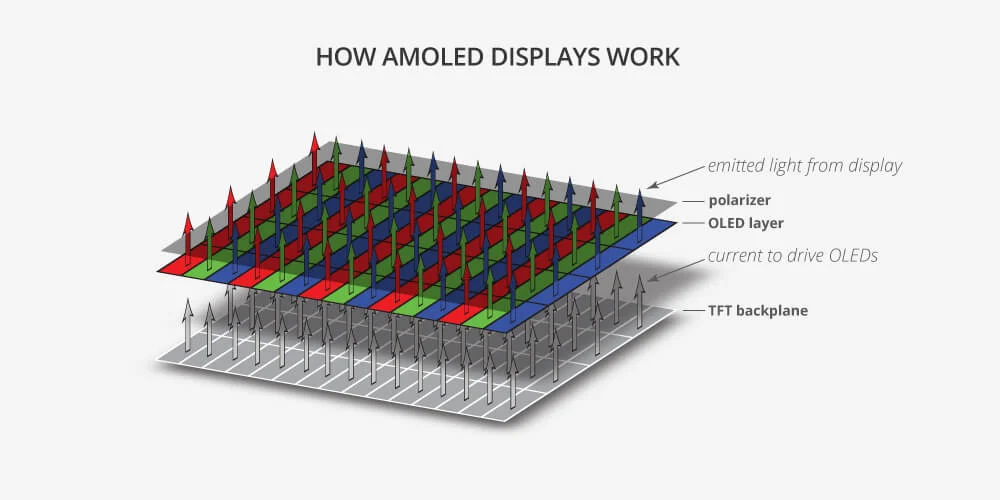What is an AMOLED Display?

In the realm of cutting-edge display technology, one name stands out: AMOLED. Let’s take a journey into the world of AMOLED displays and unravel the captivating technology that powers our devices’ screens.
What is AMOLED?
AMOLED Defined
AMOLED, or active-matrix organic light-emitting diode, is a type of OLED display technology. This technology employs organic compounds as the luminescent material, while “active matrix” refers to the intricate method used to address each individual pixel.
The Evolution of AMOLED
Since its inception in 2006, AMOLED technology has soared to new heights. Initially finding a home in mobile phones, media players, TVs, and digital cameras, AMOLED’s evolution continues to focus on enhanced power efficiency, affordability, and stunning high-resolution visuals.
Decoding AMOLED’s Inner Workings

Pixel Brilliance
Imagine an AMOLED display as an orchestra of active OLED pixels. Upon electrical activation, these pixels emit mesmerizing light. The magic happens on a thin-film transistor (TFT) array, a series of switches that govern pixel activity. Every pixel involves at least two TFTs, managing the steady flow of current without the need for excessive power.
The Role of TFT Backplane Technology
The foundation of AMOLED displays rests on TFT backplane technology. Two primary variants, polycrystalline silicon (poly-Si) and amorphous silicon (a-Si), make it possible to fabricate active-matrix backplanes at low temperatures on flexible plastic substrates. This innovation has paved the way for flexible AMOLED displays.
From Inception to Adoption
Birth of a Star
The year 2006 marked AMOLED’s birth, with Samsung SDI playing a pivotal role. Early consumer gadgets like the BenQ-Siemens S88 mobile handset and the iriver Clix 2 portable media player showcased AMOLED’s potential. Visionary brands like Nokia and Samsung Electronics embraced AMOLED displays in their smartphones.
Redefining the Future: Advancements and Beyond
Manufacturers continue to push the envelope with innovations. In-cell touch panels seamlessly integrate touch sensors into AMOLED modules. Samsung’s “Super AMOLED” technology diminishes sunlight reflection. Researchers, employ sophisticated techniques, optimize coating processes, and enhance AMOLED displays for tomorrow’s world.
AMOLED Delights and Dilemmas
Pros
- Swift Refresh Rates
- Speedy Response Times
- Low Power Consumption
- Vibrant Colors
- Superior Contrast Ratios
Cons
- Vulnerable to Degradation
- Challenging Visibility in Sunlight
- Potential for Burn-In
Navigating AMOLED Lingo
Manufacturers utilize marketing terms to differentiate AMOLED displays based on resolutions and sub-pixel layouts. Terms like “Super AMOLED” and “Dynamic AMOLED” offer insights into display features and characteristics.
Embracing the Future: AMOLED Beyond Today
The future holds promise. Flexible, 3D, transparent Super AMOLED Plus displays, boasting high resolutions and imaginative designs, are on the horizon. Brands like Samsung are gearing up to introduce these innovative displays under intriguing monikers like “Youm” or “y-octa.” The potential of 3D stereoscopic displays with eye-tracking technology adds another layer of excitement.
Conclusion: The AMOLED Odyssey Continues
AMOLED displays have redefined the way we perceive visual content. From their inception to the strides they’re making in the present, AMOLED technology keeps us spellbound. As the journey unfolds, we anticipate even more astonishing developments in the realm of AMOLED displays.










One Comment